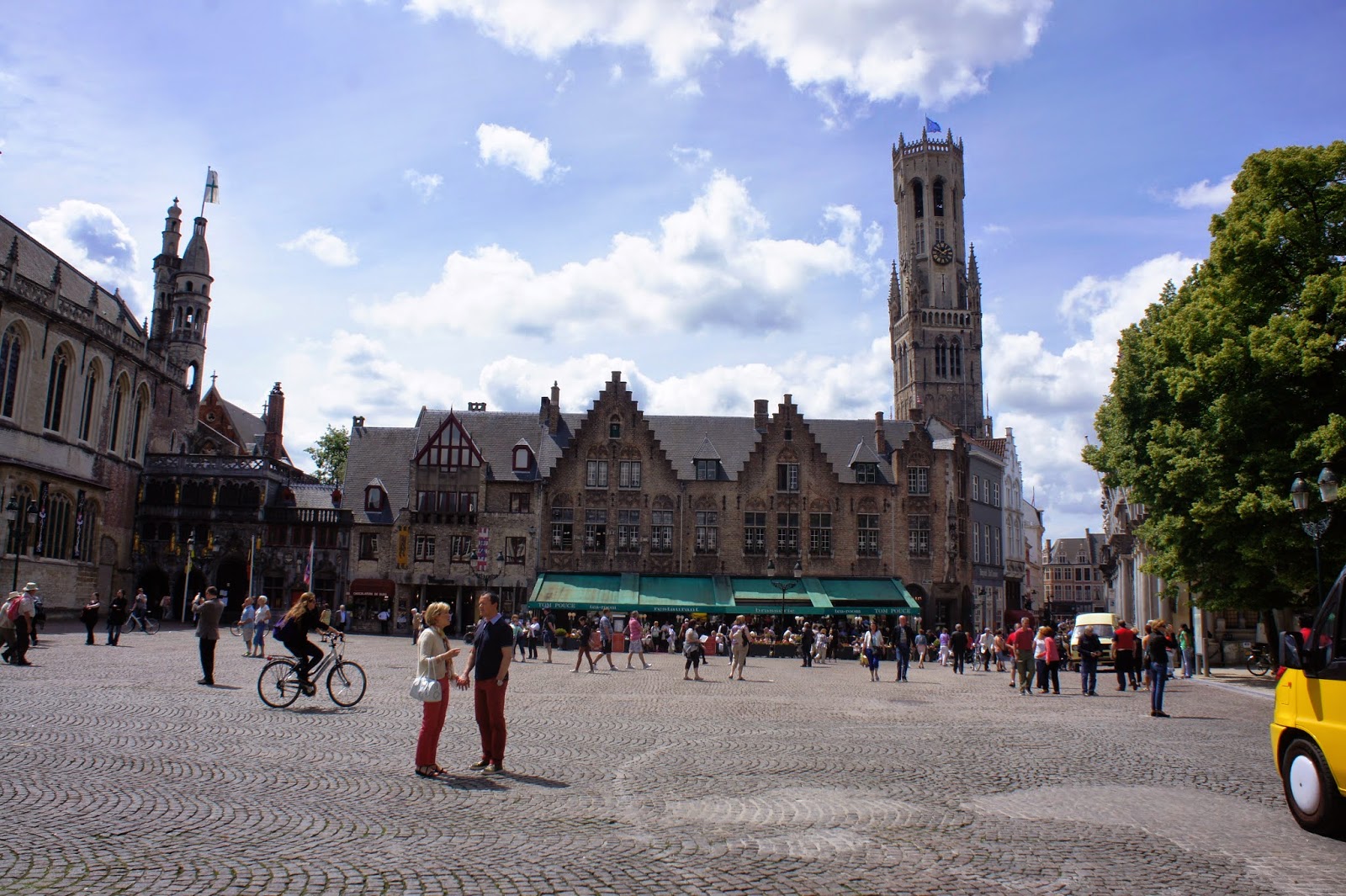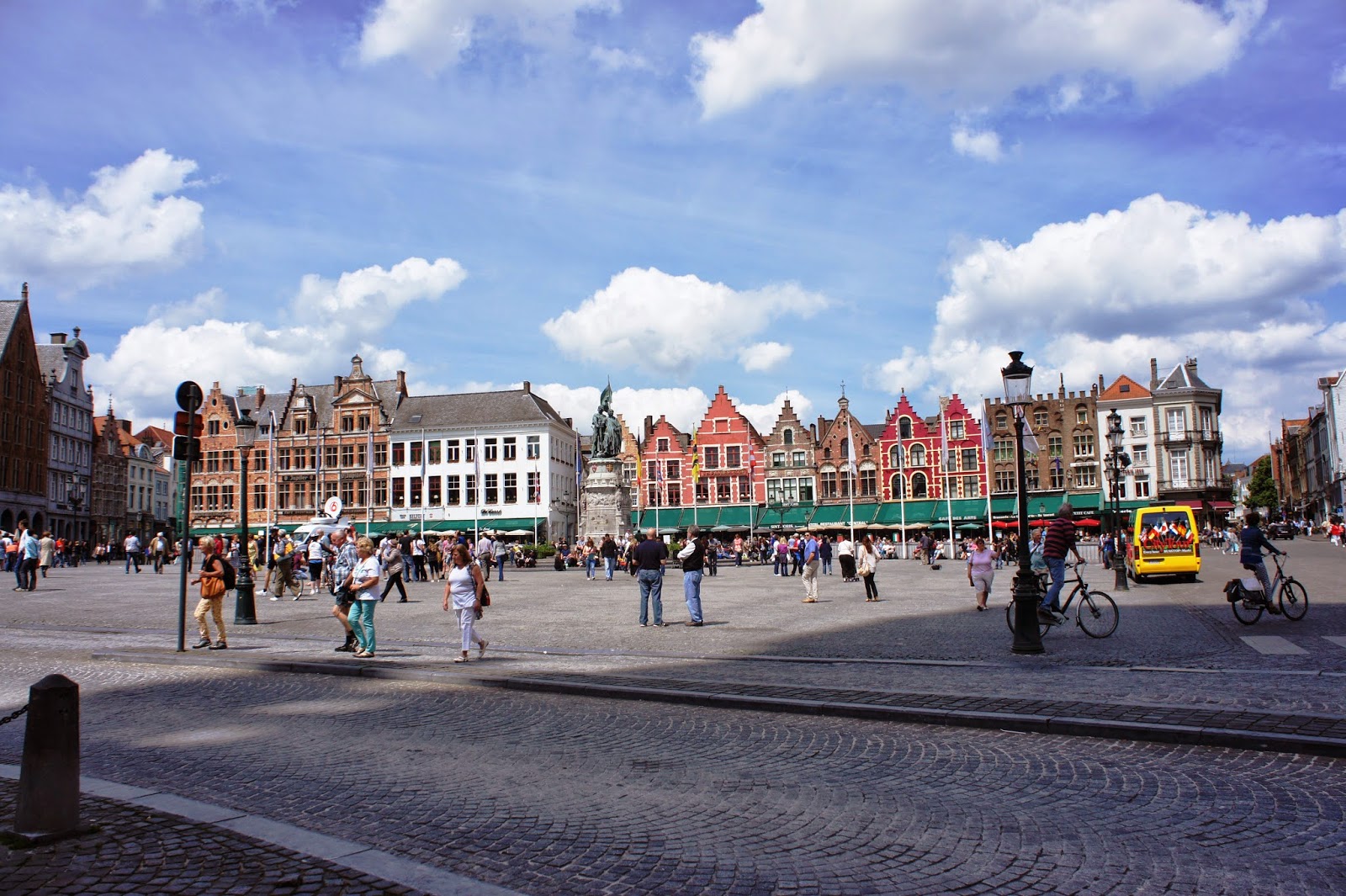we took the train from Brussels Midi/Zuid, in direction of Oostende or Knokke/Blankenberge which took 1 hour to get to Bruges. you can actually take from any of the three main train stations in Brussels (Nord/Noord, Central/Centraal or Midi/Zuid). Trains run every 30 minutes. once you arrive in Bruges, it is a 20 minutes walk to town centre and the most scenic route is to walk round the canal. Train station is at the south, cross the ring road onto Oostmeers. best way to enjoy Bruges is by foot and take the boatride on the canal (see previous post)
According to several Visit Bruges websites, these are basically the most irresistible Brugge classic which are "the must see" (in no particular order)
1. Rozenhoedkaai
This is the most photographed spot in Bruges. During the Late Middle Ages this was probably a mooring place for ships carrying salt, or salt traders came here to load and unload their merchandise. Salt was as valuable as gold then, as it could be used to preserve food and season dishes. The word ‘salary’ is derived from Latin ‘sal’, meaning ‘salt’, and reminds us of that time. (source : visit bruges.be)
2. Stadhuis (City Hall) & The Burg Square
Burg Square was already inhabited in the 2nd century AD, and in the 9th century it became the base of operations of the Count of Flanders. The Palace of the Liberty of Bruges was the place from which the surrounding countryside was governed from the Late Middle Ages until 1795. Then the buildings were occupied by law courts for nearly 200 years. To the left of the 14th-century city hall you will find the old Court of Justice, a rare example of Renaissance architecture in Bruges, and to the right you will find the Basilica of the Holy Blood, where the relic of the Holy Blood is kept.
Bruges’ City Hall (1376) is one of the oldest in the Netherlands. It is from here that the city has been governed for more than 600 years. An absolute masterpiece is the Gothic Hall with its late 19th-century murals and polychrome vault.
(source : visitbruges.be)
Tucked at the corner of the Burg is Basiliek van het Heilig Bloed (Basilica of the Holy Blood).
This double chapel consists of the Romanesque Church of Saint Basil (1139-1149) on the ground floor and the Basilica on the first floor, rebuilt in Gothic revival style in the 19th century. The Relic of the Holy Blood is kept in the Basilica. (source : visitbruges.be)
3. The Belfry & Markt (Market Square)
Markt is dominated by its Belfry, for centuries the city’s foremost edifice and the perfect look-out in case of war, fire or any other calamity.
The statue of Jan Breydel and Pieter de Coninck graces the middle of the square. These two popular heroes of Bruges resisted French oppression and consequently played an important part during the Battle of the Golden Spurs in 1302. Their statue neatly looks out onto the Gothic revival style Provincial Palace. Until the 18th century this used to be the extremely busy Waterhalle, a covered warehouse where goods were loaded and unloaded along the canals that ran alongside the square. Today the canals are still there, albeit underground.
(source : visitbruges.be)
Provincial Palace
Belfry - The most important of Bruges’ towers stands 83 metres tall. It houses a treasure-chamber, an impressive clock mechanism and a carillon with 47 silvertoned bells.Your reward after a climb up the tower’s 366 stairs is a breathtaking and unforgettable panoramic view of Bruges. (we couldn't be bothered climbing up though!) (source:visitbruges.be)
4. Onze-Lieve-Vrouwekerk (Church of Our Lady)
The Church of Our Lady, is a medieval church which was constructed over a period of at least two hundred years, starting in the 13th century. At a height of 122.3m (just over 400 feet) it includes the second tallest brickwork tower in the world and is the tallest spire in Belgium. the reason why so many tourists visit the church is the white marble structure of Madonna & Child by Michelangelo approximately in 1504. It is one of just a handful of Michelangelo’s sculptures to be found outside Italy.
Minnewater used to be a mooring place for barges which ensured a regular connection between Bruges and Ghent. Nowadays this is one of the most romantic spots in Bruges. The place-name Minnewater or 'water of the water sprite’ is derived from the medieval popular belief in 'minnen' or water sprites, which preferably dwelled under bridges. (source : visitbruges.be)
6. Sint-Jans hospitaal (Saint John’s Hospital)
Saint John’s Hospital has an 800 year-old history of caring for pilgrims, travellers and the sick. Visit the medieval wards where the nuns and monks performed their work of mercy and marvel at the impressive collection of archives, art works, medical instruments and six paintings by Hans Memling..
The historic area of the former Hospital of Saint John (Old Saint John’s) is currently hosting a permanent exhibition of more than 120 original works of art by Pablo Picasso
7. Gruuthusemuseum (Gruuthuse Museum)
The museum contains all manner of objects that shed light on everyday life between the 15th and 19th centuries. One of the major attractions is the Hall of Honour with its tapestries, impressive fireplace and richly decorated rafters, all witnessing the wealth and affluence of the lords of Gruuthuse.
just to add one last bit on our visit to Brugge, on our way to the train station from Gruuthouse Museum towards Minnewater, we saw this lady weaving "handmade lace", Belgian traditional cottage industry. it looks so intricate but she did it really fast..
Lace makers are traditionally women. Hundreds of craftswomen still work in Bruges and Brussels, centers of bobbin lace, creating intricate work by hand, often using over 100 threads per bobbin.
(source:visitbelgium.com)



































No comments:
Post a Comment